Heparan sulfate proteoglycans present PCSK9 to the LDL receptor
- PMID: 28894089
- PMCID: PMC5593881
- DOI: 10.1038/s41467-017-00568-7
Heparan sulfate proteoglycans present PCSK9 to the LDL receptor
Abstract
Coronary artery disease is the main cause of death worldwide and accelerated by increased plasma levels of cholesterol-rich low-density lipoprotein particles (LDL). Circulating PCSK9 contributes to coronary artery disease by inducing lysosomal degradation of the LDL receptor (LDLR) in the liver and thereby reducing LDL clearance. Here, we show that liver heparan sulfate proteoglycans are PCSK9 receptors and essential for PCSK9-induced LDLR degradation. The heparan sulfate-binding site is located in the PCSK9 prodomain and formed by surface-exposed basic residues interacting with trisulfated heparan sulfate disaccharide repeats. Accordingly, heparan sulfate mimetics and monoclonal antibodies directed against the heparan sulfate-binding site are potent PCSK9 inhibitors. We propose that heparan sulfate proteoglycans lining the hepatocyte surface capture PCSK9 and facilitates subsequent PCSK9:LDLR complex formation. Our findings provide new insights into LDL biology and show that targeting PCSK9 using heparan sulfate mimetics is a potential therapeutic strategy in coronary artery disease.PCSK9 interacts with LDL receptor, causing its degradation, and consequently reduces the clearance of LDL. Here, Gustafsen et al. show that PCSK9 interacts with heparan sulfate proteoglycans and this binding favors LDLR degradation. Pharmacological inhibition of this binding can be exploited as therapeutic intervention to lower LDL levels.
Conflict of interest statement
C.G., P.M., and S.G. are inventors on two patent applications on compounds for treating lipoprotein metabolism disorders submitted by Aarhus University. C.G., P.M., and S.G. have significant financial interest in Draupnir Bio ApS, a company that develops PCSK9 inhibitors and has exclusively licensed the above-mentioned intellectual property. The remaining authors declare no competing financial interests.
Figures
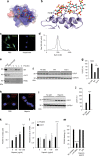


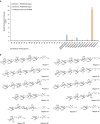
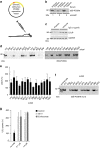
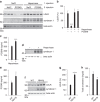
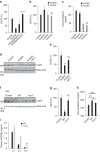

Similar articles
-
Cell-associated heparin-like molecules modulate the ability of LDL to regulate PCSK9 uptake.J Lipid Res. 2019 Jan;60(1):71-84. doi: 10.1194/jlr.M087189. Epub 2018 Nov 21. J Lipid Res. 2019. PMID: 30463987 Free PMC article.
-
[PCSK9: Structure and function. PCSK9 and low-density lipoprotein receptor. Mutations and their effects].Clin Investig Arterioscler. 2016 May;28 Suppl 2:3-8. doi: 10.1016/S0214-9168(16)30164-4. Clin Investig Arterioscler. 2016. PMID: 27888903 Review. Spanish.
-
Hypercholesterolemia in Progressive Renal Failure Is Associated with Changes in Hepatic Heparan Sulfate - PCSK9 Interaction.J Am Soc Nephrol. 2021 Jun 1;32(6):1371-1388. doi: 10.1681/ASN.2020091376. Epub 2021 Mar 23. J Am Soc Nephrol. 2021. PMID: 33758009 Free PMC article.
-
Heparin Does Not Regulate Circulating Human PCSK9 (Proprotein Convertase Subtilisin-Kexin Type 9) in a General Population-Brief Report.Arterioscler Thromb Vasc Biol. 2023 Feb;43(2):352-358. doi: 10.1161/ATVBAHA.122.318556. Epub 2022 Dec 8. Arterioscler Thromb Vasc Biol. 2023. PMID: 36475702 Free PMC article.
-
Regions of conformational flexibility in the proprotein convertase PCSK9 and design of antagonists for LDL cholesterol lowering.Biochem Soc Trans. 2020 Aug 28;48(4):1323-1336. doi: 10.1042/BST20190672. Biochem Soc Trans. 2020. PMID: 32794575 Review.
Cited by
-
Proprotein Convertase Subtilisin/Kexin 9 (PCSK9) Promotes Macrophage Activation via LDL Receptor-Independent Mechanisms.Circ Res. 2022 Nov 11;131(11):873-889. doi: 10.1161/CIRCRESAHA.121.320056. Epub 2022 Oct 20. Circ Res. 2022. PMID: 36263780 Free PMC article.
-
Improving genetic variant identification for quantitative traits using ensemble learning-based approaches.BMC Genomics. 2025 Mar 12;26(1):237. doi: 10.1186/s12864-025-11443-x. BMC Genomics. 2025. PMID: 40075256 Free PMC article.
-
PCSK9 deficiency alters brain lipid composition without affecting brain development and function.Front Mol Neurosci. 2023 Jan 17;15:1084633. doi: 10.3389/fnmol.2022.1084633. eCollection 2022. Front Mol Neurosci. 2023. PMID: 36733269 Free PMC article.
-
Repurposed drugs as PCSK9-LDLR disruptors for lipid lowering and cardiovascular disease therapeutics.Mol Divers. 2024 Dec 8. doi: 10.1007/s11030-024-11063-9. Online ahead of print. Mol Divers. 2024. PMID: 39645639
-
PCSK9 Pleiotropism: In the Same Vein as Statins.Circ Res. 2022 Nov 11;131(11):890-892. doi: 10.1161/CIRCRESAHA.122.322035. Epub 2022 Nov 10. Circ Res. 2022. PMID: 36356112 Free PMC article. No abstract available.
References
Publication types
MeSH terms
Substances
LinkOut - more resources
Full Text Sources
Other Literature Sources
Molecular Biology Databases
Miscellaneous

